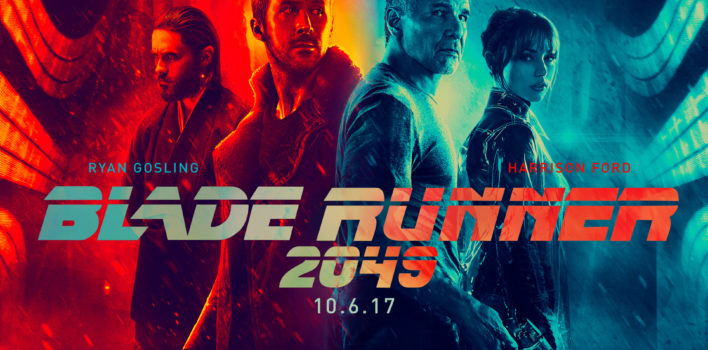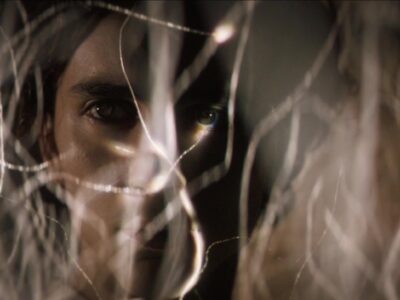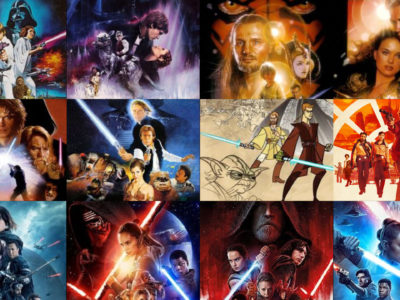Review| Blade Runner 2049
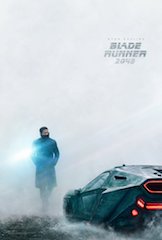 I have heard plenty of platitudes and honorifics thrown around for Blade Runner 2049, the follow-up to Ridley Scott’s 1982 Sci-Fi Neo-Noir, Blade Runner. Even before last night’s opening, the trailer was hailed as gorgeous, tantalizing, and Villeneuve’s vision advances the legacy Scott started 35 years ago. I saw a couple people referring to it as the “Fury Road” of 2017, likening this sequel to George Miller’s visually stunning and fuel-injected thriller from 2015. While the comparison could be apt, it seems of utmost importance to address this latter platitude followed by the former rapturous esteem.
I have heard plenty of platitudes and honorifics thrown around for Blade Runner 2049, the follow-up to Ridley Scott’s 1982 Sci-Fi Neo-Noir, Blade Runner. Even before last night’s opening, the trailer was hailed as gorgeous, tantalizing, and Villeneuve’s vision advances the legacy Scott started 35 years ago. I saw a couple people referring to it as the “Fury Road” of 2017, likening this sequel to George Miller’s visually stunning and fuel-injected thriller from 2015. While the comparison could be apt, it seems of utmost importance to address this latter platitude followed by the former rapturous esteem.
Both Fury Road and Blade Runner 2049 were released 35 years after their progenitor and are Sci-Fi thrillers from the minds of legendary directorial minds–although Scott did not direct this sequel. The comparisons between the two breaks down a little bit outside the city limits of each movie’s dystopian future. If Miller’s 2015 epic thrill-ride can be described as “big, loud, and relentless”, then Villeneuve’s newest movie is the poorest replicant of Miller’s. It’s quiet, unassuming, and reflective. Taking cues from Villeneuve’s vision in Sicario, the world Ryan Gosling’s “K” inhabits is not only bleak but oppressive. Whether it’s the tight confines of K’s apartment, the mist/steam-shrouded streets of dystopian LA or the often ear-assaulting low horn blasts from the soundtrack that one can only assume is the sound a tuba makes when dynamite is detonated from inside the instrument, the movie’s aesthetic is meant to bespeak the world’s grim circumstances.
But Fury Road pummeled the senses. Blade Runner 2049 tantalizes them. The greatest strength of the movie is the aforementioned aesthetics. Long stretches of silence are punctuated by beautiful sound design and photography by overdue-for-an-Oscar Roger Deakins. The same standout shots shown in the trailers are there, but there are a couple more beautifully constructed shots than what was seen before the movie released that take your breath away. However, not to take anything away from Mr. Deakins–give him the Oscar already–but many of these shots would not have the otherworldly beauty found in them if not for the massive art department that worked on this movie, many of whom seem to have worked on recent movies like Kong: Skull Island and The Martian, a Ridley Scott movie, as well as a wide array of studio films. This movie, like Fury Road, fully displays the artistic and technical mastery of people who make modern blockbuster and studio movies look the way they do.
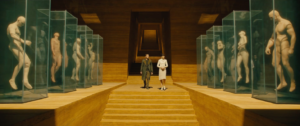
Yet, something about 2049 remains unfeeling and distant. Fury Road contained a bare-bones plot yet managed to possess a human core in the midst of chrome, gasoline, and paternalistic tyranny. The original Blade Runner was a neo-noir; dark, wet, grimy, yet still at its soul like 1970’s New York in Taxi Driver; densely populated with soulful, real humans. 2049 is cold and detached, seemingly less concerned with humanity and more woefully tangled in a plot that grows in its complexity with the introduction of each new character, the nadir being Jared Leto’s unfascinating megalomaniac CEO Niander Wallace. Despite the movie positing a future where replicants are essentially indistinguishable from real humans except for a maddening “base-line” questionnaire, I will take the slightly robotic and ice-cold demeanor of Rutger Hauer over any of the Nexus 8’s in Blade Runner 2049.
Unfortunately, Villeneuve’s movie loses some of what I liked about Blade Runner and adds a little bit of what I liked from Fury Road, namely the scenery of later desert and scrapyard scenes, but fails to set a mood or morality worthy of either. I will avoid spoiling much more around the morality of the film, but I will say it does not reach the depths of its predecessor, but majors on mood and thought that I found genuinely satisfying to the usual unyielding firehose of garbage dialogue and scene-chewing found in most big name studio films that would attract 18-35-year-old males like me and my ilk. Hopefully, more thoughts will follow but until then, definitely, check out this movie. Make sure to see Blade Runner first–I don’t care which version–otherwise it might be a bit confusing. Oh yeah, and then go watch Fury Road 20 more times.


